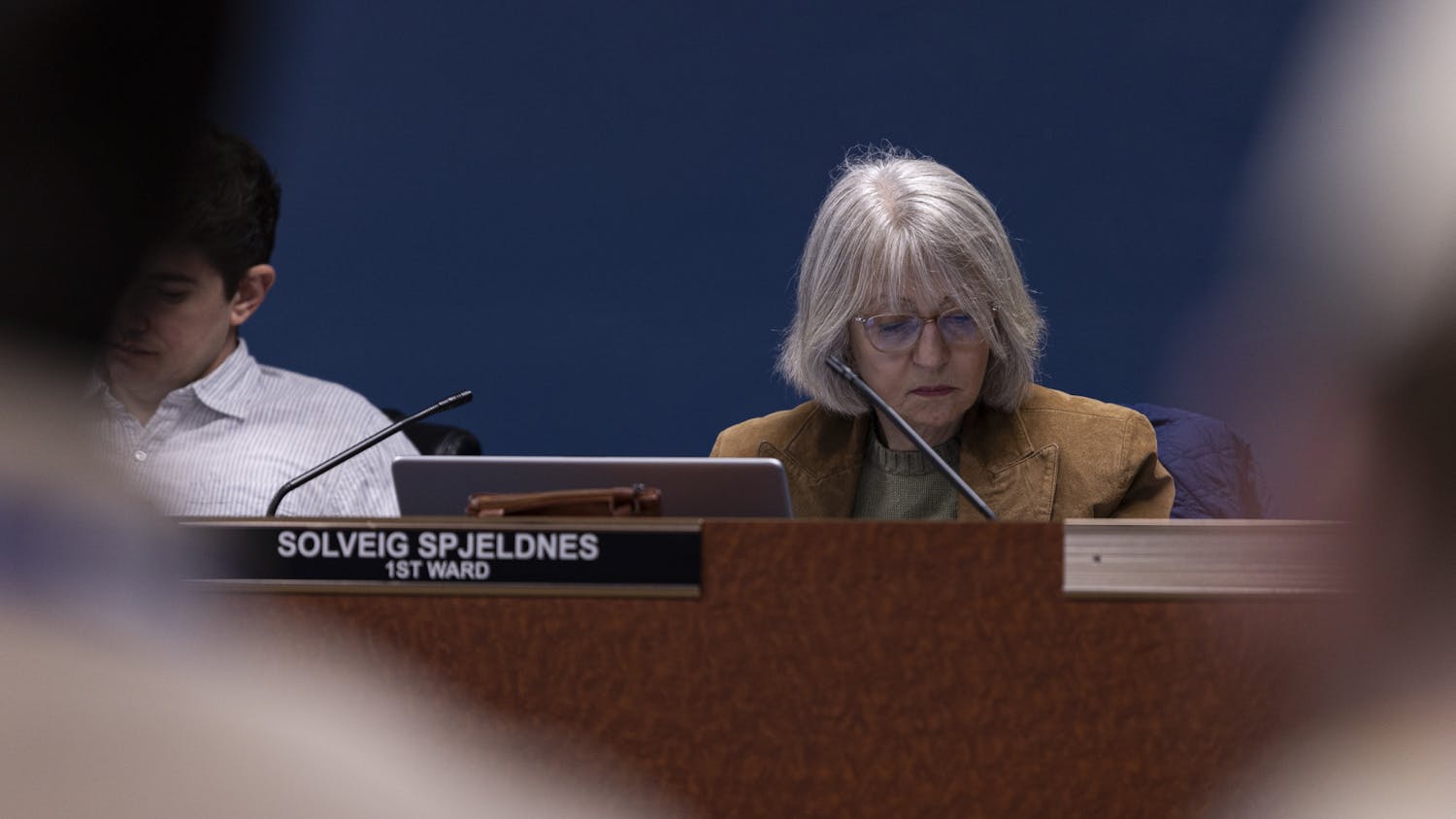Clarification appended.
Ohio University’s operating revenue for the 2020 fiscal year is $758.9 million, which is only about $1.6 million larger than the operating expenses of $757.3 million.
Since 2016, the highest revenue was in 2017 when it was $783.6 million. Since then it has risen from $756 million in the 2018 fiscal year to $758 million in the 2020 budget.
In the 2019 fiscal year the academic reserves was at $110.5 million. That number is projected to decrease to $80.3 million in the 2020 fiscal year and further decrease to $50.5 million in 2022. It is predicted to start increasing in the 2024 fiscal year, according to the 2020 budget.
OU is budgeted to make $286.8 million in undergraduate tuition from all campuses and eLearning, which is the online learning program. That is a decrease from 2016, which saw $304.5 million come in from undergraduates.
Over $8.5 million of the athletics department’s budget’s revenue in 2020 supports the cost of Student-Athlete scholarship expense, University Spokesman Jim Sabin said in an email. Another $7.6 million comes from internal and external sales. The total revenue for athletics (net of scholarship expense) in 2020 is $29,689,862, including $19.2 million in central support from the Administrative Cost Distribution, which is comprised of funding from undergraduate tuition, fees, state allocations, and a variety of other sources, that supports student scholarship and a percentage of their annual expense budget.
Athletics is budgeted to spend $21,326,365 in 2020, which is $202,946 over the revenue. The biggest expense is payroll, which is over $7.9 million. The second largest cost was predicted to be supplies, services and capital costs, which was budgeted at $7,071,672. Benefits for employees also takes up $2.6 million.
The forecasted 2020 budget requires $175.5 million in state appropriations, which is an increase from 2019, which was $171.9 million. In 2016, OU only got $161.5 million in state appropriations.
OU’s undergraduate student enrollment has been declining since 2017. According to the Budget Book, “Recent declines in our undergraduate student population will be exacerbated in the future by declines in the U.S. birthrates.”
The birth rate has been on a gradual decline since about 1990, according to the Centers for Disease Control and Prevention’s 2018 provisional data.
OU’s regional campus enrollment for full-time undergraduate students has also been declining. There were 12,696 students in 2016 and only 10,381 are predicted for 2020.
2017’s undergraduate enrollment on the Athens campus was 18,209, which was the highest number since 2016. The 2019 enrollment was 17,325 students, according to the budget.
Enrollment is projected to get as low as 16,411 in the 2021 fiscal year. The university also predicted that undergraduate enrollment would begin increasing, but not getting above 17,000, until 2024.
In 2016, 4,423 freshmen started at OU in the Fall Semester. In 2019’s Fall Semester, 3,671 undergraduate students started at OU, according to an OU news release.
Tuition earnings decreased by $10.2 million from 2016 until 2020, according to the budget.
State appropriations make up over 23% of the 2020 budget, which is the highest it has been since 2016. They made up only 21.7% in 2016 and 22.7% in 2019.
OU is also projected to get $29.7 million from the federal, state and local governments in 2020. There is also another $15.7 million projected from private grants and contracts.
The 2020 budget predicts that OU will earn $224.9 million in net undergraduate tuition and fees, which is down from $231.4 million in 2019. That number was $246.7 million in 2016.
The net graduate tuition and fees was budgeted at $100.9 million for 2020. In 2019, it was forecasted at only $92.2 million and in 2016 it was much less, at $71.6 million.
OU is projected to spend $366.4 million on salaries, wages and other payroll in 2020. This is up from $358.2 million in 2019 and $346.2 million in 2016. OU will also spend $123 million in benefits, which again is up from the $116.3 million in 2019 and $109.9 million in 2016.
The 2020 fiscal year administrative costs are broken down into 12 categories. The largest area is operations and maintenance, which makes up 26% of all costs. This is predicted to be about $46 million.
The next highest administrative cost is information and technology, which makes up 13%. This is predicted to be $27 million. The third highest cost is debt service step-down, which is predicted to cost $19.6 million or 10% of the total costs.
A notable area of administrative costs is the university president, which is allocated $9.1 million or 4% of the total administrative costs. Sabin said in an email associated departments to the Office of the President include Diversity and Inclusion, Marketing and Communications, Audit, Legal Affairs and Government Relations.
Total salaries are expected to make up $272.9 million in 2020. About $144 million will go toward faculty members while $128.1 million will go to administrative salaries. This type of ratio has been standard since 2016, when it was $136.4 million for faculty and $111.8 for administration.
Benefits for employees are projected to cost $123 million in 2020. Healthcare is the largest-costing benefit at $58.4 million. The next highest is variable benefits, which is $53.8 million. Other benefits and employee fee waivers cost $10.8 million together.
OU was budgeted to make $39,780,090 from culinary services in 2020. Over $37 million is budgeted to come from room and board fees, while the other money would come from sales.
Culinary Services budgeted expenses $38 million in expenses in 2020, Sabin said in an email. Most of these expenses are from supplies, benefits and salaries.
Clarification: The article has been updated to include information from University Communications and Marketing and further explanation on some points of the budget.






